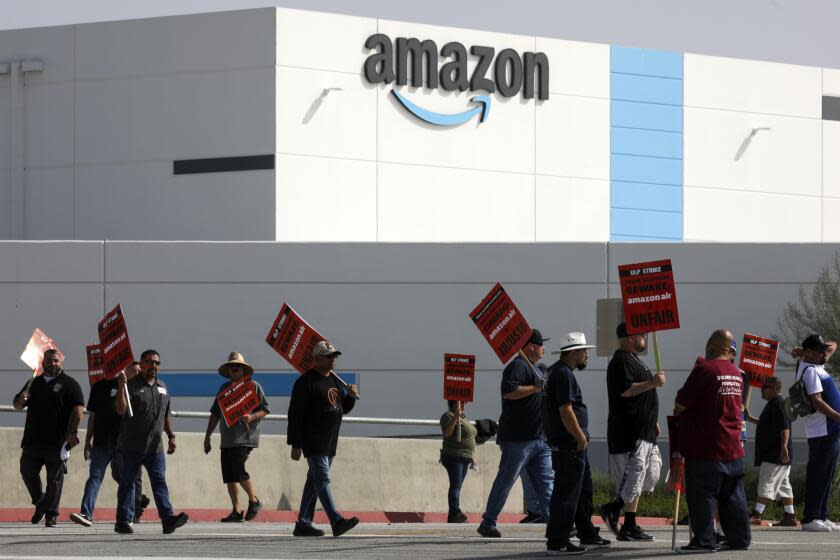In scramble to protect workers against heat, California officials exclude prisons from new rules

After last-minute objections from state officials thwarted plans to implement protections for workers in hot warehouses and other indoor facilities, California's workplace safety agency is trying again to adopt the measures before the summer heat arrives.
At a March 21 meeting, the state board overseeing workplace safety standards was primed to approve the landmark regulations. Shortly before the start of the meeting, however, officials from the state's Finance Department, which must sign off on new workplace rules, intervened. They raised concerns about the costs that California prisons and other public entities would incur trying to adhere to the new rules, saying the price tag for cooling correctional facilities could run "in the neighborhood of billions of dollars."
Now, California's Division of Occupational Safety and Health, or Cal/OSHA, said it will revise the proposed indoor heat rule to exclude state and local correctional facilities — an amendment that would appear to clear a path for approval of the rules in coming weeks.
H.D. Palmer, a spokesman for the Department of Finance, indicated the department supported the move.
"I don't want to get ahead of our staff's review, but given that it excludes correctional facilities, it would appear to address the issues that we had," he said.
The announcement that correctional facilities will be carved out from the rule was made by the agency's standards board Thursday and came amid considerable pressure from labor groups to get protections in place for their members.
"We are hopeful this will create a path for protections this summer but will not stop advocating until it is accomplished," said Lorena Gonzalez, head of the California Labor Federation.
The federation and scores of regional unions and other workers groups sent a letter to Gov. Gavin Newsom on April 1 urging him to "act immediately" to approve the rule.
"With the swipe of a pen, the State of California can easily prevent workplace injuries and deaths brought on by indoor heat," the letter read. "Summer is coming, and time is a luxury that workers cannot afford."
Under the proposed indoor heat rule, employers would have to provide cooling areas and monitor workers taking breaks to cool down for signs of heat illness when temperatures inside reach or surpass 82 degrees.
If temperatures climb to 87 degrees, or workers are made to work near hot equipment, employers would be mandated to take additional safety precautions to either cool the broader work site, allocate more breaks, rotate out workers or make other adjustments.
After the board's aborted vote, the state blew past a procedural deadline to get sign-off from the Finance Department, leaving supporters of the new rules to worry that the approval process would have to start from scratch.
But Eric Berg, a Cal/OSHA deputy chief, said Thursday the agency had found a way to extend the deadline, giving it the time it needed to revise the rules to exempt prisons.
It is expected to take several weeks for the revised rules to be formally approved, Berg said.
He added that Cal/OSHA plans to propose separate rules that would spell out heat safety measures for workers in jails and prisons. Those rules must go through the lengthy approval process from the start, which could take months or years.
Gonzalez, of the California Labor Federation, said unions for workers at correctional facilities are working with the governor's office to craft a proposal. She said public sector unions may look to implement safety rules earlier, through collective bargaining agreements.
The original indoor heat rule is nearly eight years in the making, stemming from a 2016 mandate by the California Legislature directing Cal/OSHA to develop heat safety regulations.
The need for indoor guidelines has become increasingly urgent as climate change makes heat waves and high temperatures more frequent and severe, experts say. Some warehouses, shipping centers, kitchens, schools and other workplaces can soar above 90 degrees.
"We need these regulations to be in place before the summer," said Laura Stock, a board member reached by phone last month. "As we heard from the testimony of all the workers and organizations that were there, people are suffering from the impact of heat illness."
This story originally appeared in Los Angeles Times.

